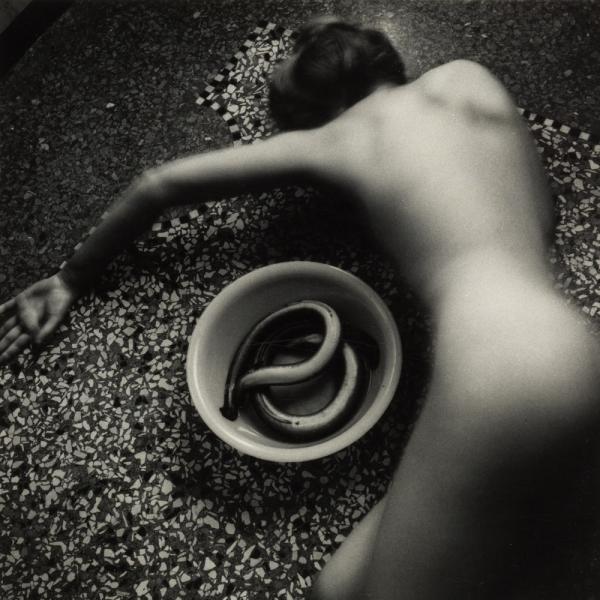In ‘Representing Women’, episode three in our Reflections podcast series, Ewen Bremner introduces some different ways that the female form has been depicted in art.
The episode discusses surreal, animalistic avatars of women, female artists who have used their own bodies in their work, male depictions of women, plus we hear from an artist whose practice underwent an enormous shift after having children.

Leonora Carrington
The podcast begins with a look at the surrealist painter, writer and political activist, Leonora Carrington. We hear from journalist Joanna Moorhead who became fascinated by the story of her father’s cousin, a Lancashire born girl who left behind her wealthy, nouveau riche family to pursue an alternative, more fulfilling but at that time shocking, artistic lifestyle.
Seen as a troublesome child who was expelled from boarding school, Carrington found escape via her relationship with the German artist Max Ernst. Living together in Paris and Provence, the couple collaborated on various works – Carrington is often described as Ernst’s muse, although she didn’t like the term herself. Archivist Kirstie Meehan from the National Galleries of Scotland looks at a portrait of Ernst by Carrington from 1939, and describes how horses become a surreal, recurring representation of Carrington and female creativity.
After Ernst was imprisoned in Vichy France, Carrington had a serious breakdown but rebuilt her life in America, before settling in Mexico where she died in 2011. Moorhead interviewed Carrington in her kitchen, and speaks of a strong, driven woman who underwent several traumas in her life that she tried to unpack and reinterpret through her art.
Lee Miller, Francesca Woodman and Sarah Lucas
The photographer Lee Miller is described as ‘a fierce character’ who earned the respect, trust and affection of the artist Picasso, with both artists taking inspiration from one another. As both photographer and model, Miller understood how to pose best with good lighting, as well as how to capture others on camera.
The American photographer Francesca Woodman explored gender and her own body through her work, some of which is currently on display as part of ARTIST ROOMS. Before she died by suicide at the young age of 22, she used suggestive props, pieces of furniture and obscured depictions of herself to disguise and explore her own presence in her art.
Sarah Lucas was one of the young British artists who emerged in the nineties, using visual puns, humour and sensationalist tabloid images to interrogate traditional gender depictions. A series of twelve self portraits in the National Galleries collection shows her playing around with ideas of femininity and masculinity, using fried eggs and a banana, for example, to make confrontational or comical poses.
Jenny Saville – how motherhood redirected her artistic practice
The British painter Jenny Saville joins the podcast to explain how motherhood affected her own work or as she puts it, ‘My kids gave me back my artistic freedom’.
Having always been concerned with the physicality of nude women and the representation of flesh, Saville describes how the process of being pregnant and giving birth, then watching as her toddlers experimented with painting gave her fresh insights into her own art. She compares the intense experience of being in labour as, “like being in a Francis Bacon painting”.
Finally, NGS curator Anne Lydon discusses the photographer Robert Mapplethorpe’s depiction of the female bodybuilder Lisa Lyon, a muse that he photographed over 200 times. Her mix of femininity and masculinity drew him to her, initially as a lover and later as an artistic inspiration.




